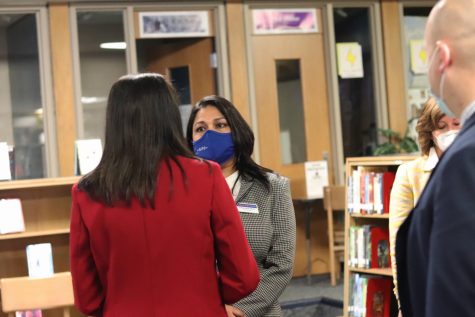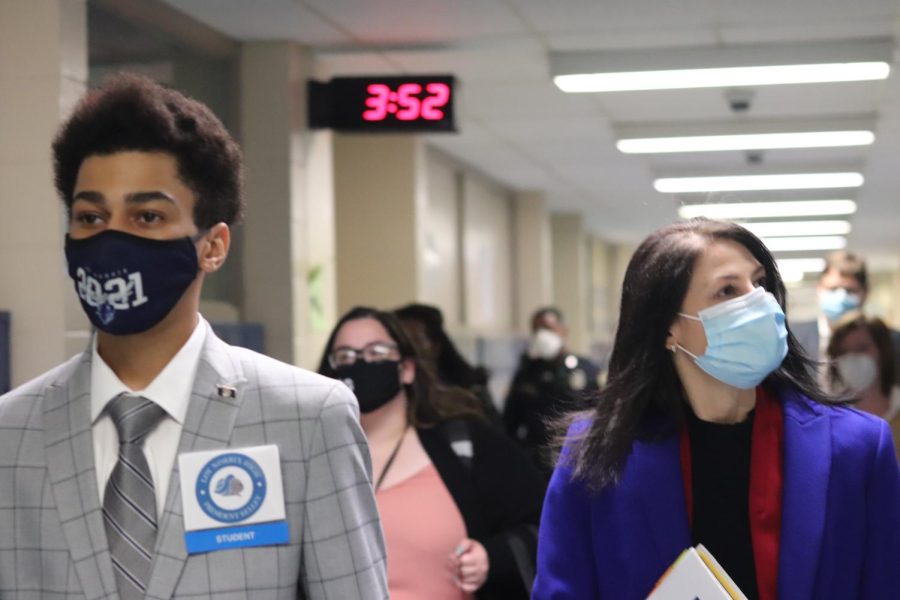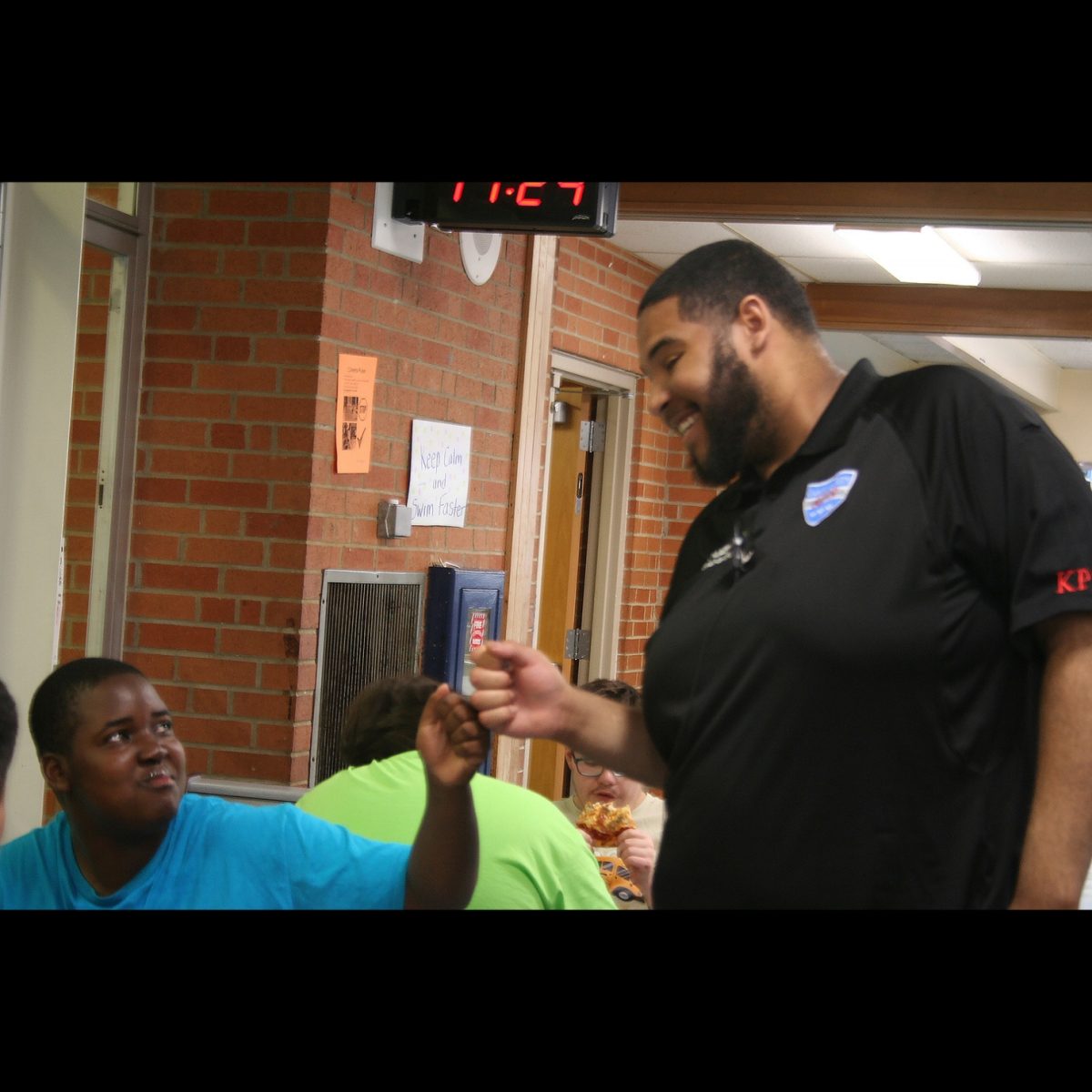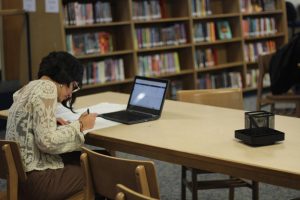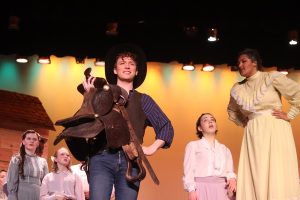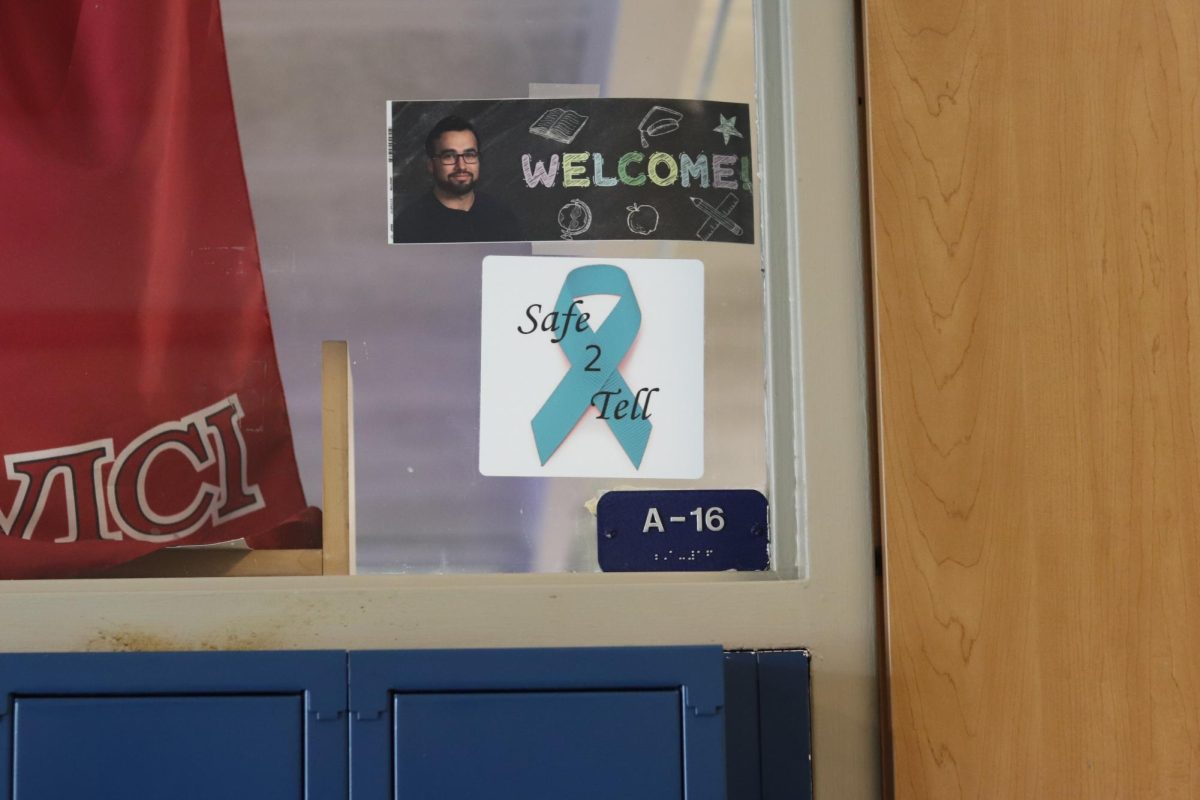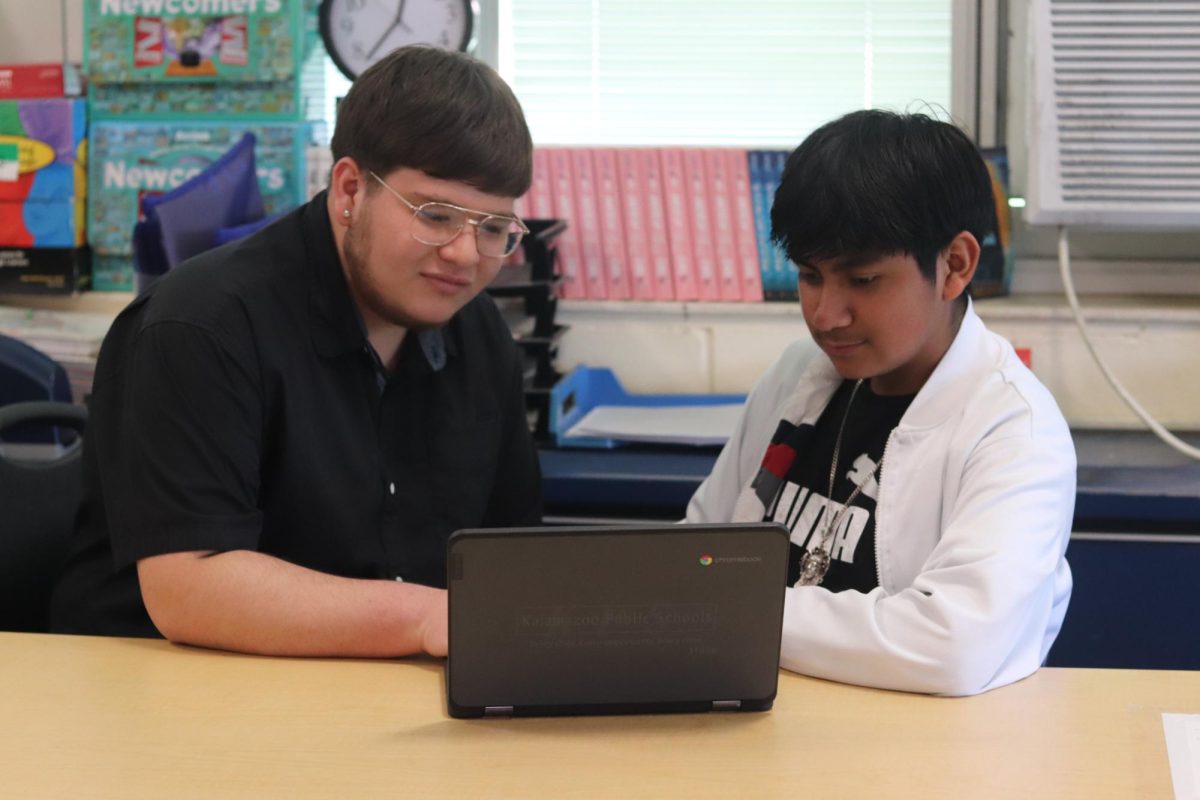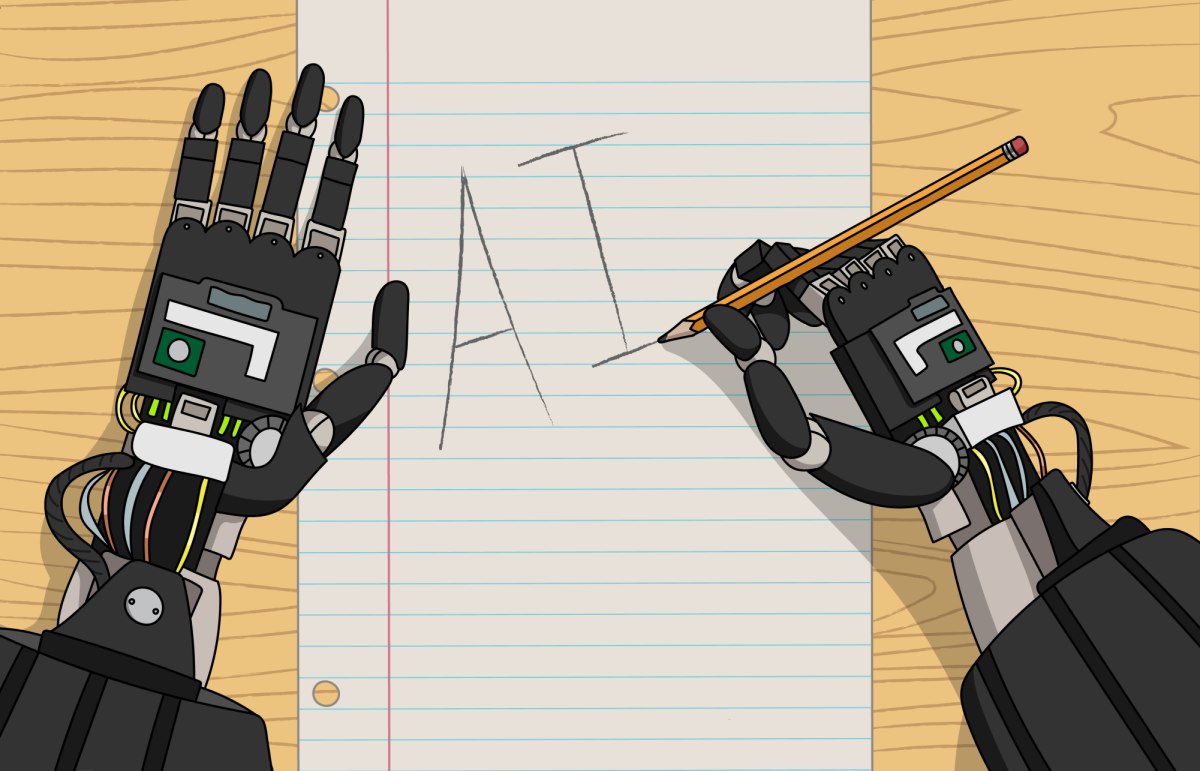Attorney General visits Loy Norrix to discuss school safety in KPS
Credit: Josephine Velo
Attorney General Dana Nessel, right, was given a quick tour of Loy Norrix following the school safety meeting. Loy Norrix junior Jaydon Kelley, pictured left, helped lead the tour through the halls, past the main office, and into the C-wing where the tour ended.
May 29, 2022
With thousands of students attending Kalamazoo Public Schools, the safety systems that are in place make a big difference, for better or for worse.On Wednesday, April 20, Michigan Attorney General Dana Nessel joined prominent district officials in the Loy Norrix library to discuss school safety. Principal Christopher Aguinaga sat with her, as well as Kalamazoo Central principal Valerie Boggan, Phoenix principal Mark Hill, Chief of Staff and Security Donald Webster, Superintendent Rita Raichoudhuri and others.
Following up on a grant of just under half a million dollars, Kalamazoo Public Schools now have radio upgrades, better public address systems with exterior speakers, individual door locks in the case of an intruder and better paging coverage. There is also an emergency radio channel with the power to broadcast to all 26 KPS buildings, which is a great accomplishment compared to the two channels used before.
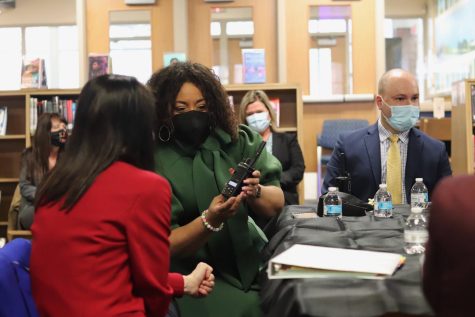
Nessel is concerned with safety, and school officials shared other ways in which KPS could benefit if they received additional grants.
The camera system that includes 1,200-1,400 cameras in KPS schools is not yet coordinated with the police department in case of an emergency, and Loy Norrix’s doors aren’t on a centralized system, so they have to be manually checked to know which are locked or unlocked. School officials said these upgrades would be next on the list, and more funds would be helpful.
“I would like the grant to give us more staffing,” Webster also expressed, “we sometimes don’t have the funds to hire them.”
The two general requests were for more funds to go into personnel, not just technology, and for the grant to extend to all KPS buildings, not just the spaces that hold K-12 students.
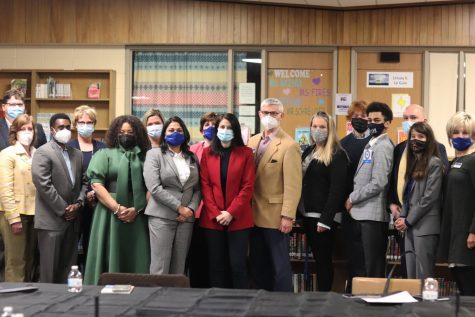
According to Nessel, another focus should be restorative justice. “School safety and restorative justice are interconnected,” she explained. Communication and trust between staff and students is vital when it comes to safety.
Hill agreed, adding, “We need adults to see their own bias,” when talking about restorative justice in schools.
Boggan explained how Kalamazoo Central deals with restorative justice as well, by always looking for ways to improve student-staff relationships and teach students to celebrate their victories while focusing on the positive. With more grant money, more money would be put into training KPS employees on restorative justice.
Social-emotional learning came up too, and school officials explained that SEL is no longer taking place on a set day like it was during online school. Currently, according to Aguinaga, SEL lessons and practices are embedded into all Loy Norrix classes.
Webster shared his mindset by adding, “All 26 buildings are a different community. Every hall is a neighborhood. What’s the best thing we can do to protect our kids?”
Of course when talking about school safety, active shooter training is involved. KPS utilizes the ALICE training model in case of an active shooter, and with high personnel turnover, Nessel wondered, “How often do you have this training?”
“We need to get back into the blended part of it,” Webster said, meaning a blend of knowledge and actual practice. “Probably some 100 teachers don’t have training on it.”
According to Boggan, Kalamazoo Central teaches the ALICE training each trimester so that new students have information.
Nessel referenced the Oxford High School shooting to demonstrate the importance of communication and restorative justice. “When there are signs, it is a lack of communication sometimes,” Nessel explained.
Those that were present then discussed pay for workers at KPS. Nessel reminisced, sharing her point of view as the daughter of a special education teacher and described the bad pay and lack of support teachers experience today.
“Teaching isn’t a good career anymore,” Nessel continued, “and we need to change that.”
